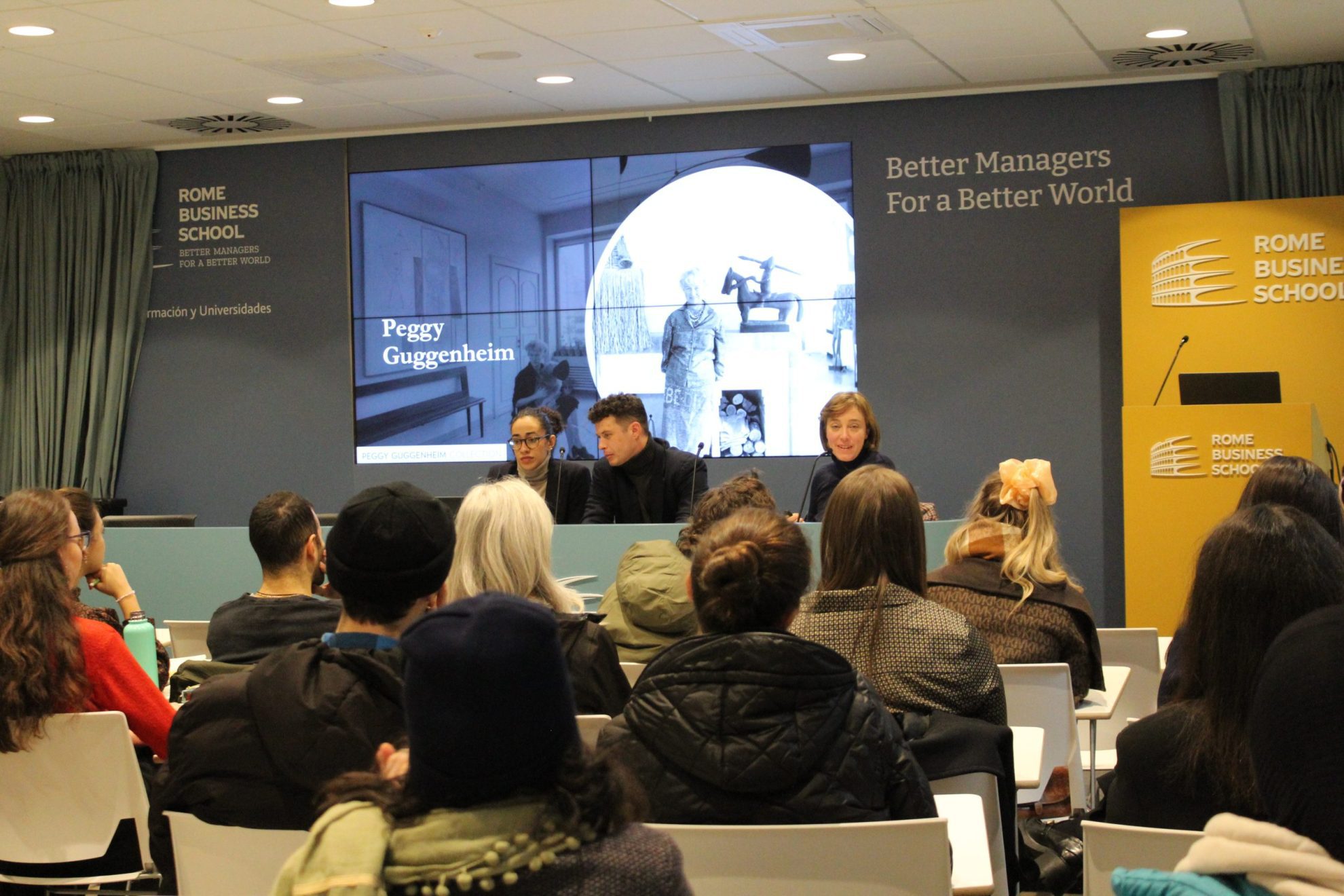Rome Business School Students meet the Peggy Guggenheim Venice Foundation

Rome Business School students had the opportunity to connect with the Peggy Guggenheim Collection of Venice, one of the most important museums in Italy for 20th century European and American art based in “Palazzo Venier dei Leoni,” in what was once the home of heiress Peggy Guggenheim for three decades.
History of the Peggy Guggenheim Museum
Peggy Guggenheim began displaying her private collection of modern artworks to the public seasonally in 1951. After her death in 1979, it passed to the Solomon R. Guggenheim Foundation, which opened the collection year-round from 1980.
She collected the artworks mostly between 1938 and 1946, buying works in Europe “in dizzying succession” as World War II began, and later in America, where she discovered the talent of Jackson Pollock, among others.
The collection includes works of prominent Italian futurists and American modernists working in such genres as Cubism, Surrealism and abstract expressionism. It also includes sculptural works.
Activities of the Museum Today
Through the talk by Elena Minarelli, Education Manager for the Peggy Guggenheim Collection, students learned about the history of the museum and the Guggenheim Foundation’s ongoing commitment to collecting, preserving and interpreting modern and contemporary art.
The speaker shared as well the education programs available, which engage a diverse public. Some of the programs the foundation hosts include School programs, programs for accessibility and inclusion, opportunities to meet curators, lectures, conferences and workshops.
A very interesting part of the meeting was undoubtedly the description of the selection process and the different career paths available such as the International Internship Program.
The opportunity to ask questions and delve into important topics allowed participants to really get up close and personal with a great international reality. With its constellation of architecturally and culturally distinct museums, exhibitions, publications and digital platforms, the Foundation has the objective to be truly international, able to engage and reach both local and global audiences from all over the world.




